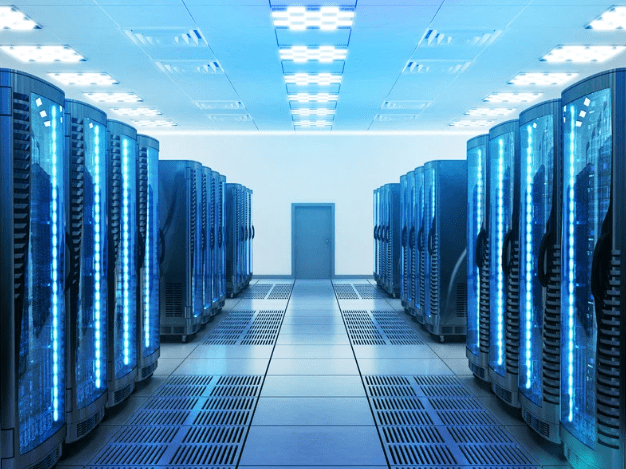
As the data center industry continues to grow driven by the rise of AI and the digital economy, the demand for these facilities has never been higher. Yet, this rapid expansion faces significant challenges – including limited power and the necessary infrastructure to support growth. Every project is under pressure to meet tight deadlines, strict requirements, and shifting owner needs due to evolving technologies, making data centers some of the most complex and demanding facilities to design, build, and power.
Recently at the Advancing Data Center Construction West 2025 event, the Coldwell Solar team joined hundreds of industry leaders – from critical hyperscalers like Nvidia, Google, Apple, and Microsoft who are shaping the strategy and future of data centers to key players such as Fortis Construction, DPR, Rosendin, Suffolk, and Cupertino Electric responsible for optimizing facilities. Our energy experts compiled the following list of key takeaways about what should be top of mind for electrical and commercial construction companies constructing and retrofitting data centers into 2025 and beyond.
- Power Demand Trends: Ensuring continuous and reliable power for data centers is a top priority for owners and operators due to the significant economic impact of any interruptions. This makes the integration of renewables, such as solar power combined with storage for 24/7 backup, essential when constructing and retrofitting data center facilities. Additionally, mitigating power intermittency and accounting for demand response requires meticulous planning and coordination with AHJs and utilities.
- Environmental Impact Tracking: Measuring impacts with metrics like Power Usage Effectiveness (PUE) to compare facility vs. equipment usage, Environmental Product Declaration (EPD) to quantify lifetime environmental impacts of equipment, or Global Warming Potential (GWP) to lower high-GWP gas emissions (like methane and nitrous oxide) is key for data centers to stay on track to meet energy targets.
- Future Technology Advancements: Data center equipment is today’s most rapidly evolving technology with significant iterations averaging every 18 months which means consumption will only increase over time. Today, typical data center power racks range between 130kW to 500kW – equating 1.1GWh to 4.3GWh in annual energy consumption – while AI-specific data centers are speculated to require approximately 14GW of additional power capacity by 2030. More equipment means more needs for efficient cooling, which is why some data centers are retrofitting their sites from air to liquid mechanisms.
Large-scale data centers are leading the way in how to stay ahead by implementing renewable energy solutions to reduce their environmental impact and operational costs across new and existing sites. Google, for example, has set an ambitious goal to achieve net-zero emissions across all its operations and value chain by 2030, which includes running its data centers on 24/7 carbon-free energy.* Apple aims to reduce emissions by 75% by 2030 and develop carbon removal solutions for the remaining 25%.** Microsoft has a 34GW contracted renewable energy portfolio with goals to power its data centers with 24/7 carbon-free energy as a part of their broader commitment to become carbon negative by 2030.***
Small- to Medium-scale data centers, however, have arguably more opportunities to capitalize on renewable energy with behind-the-meter onsite projects.
- Greater General Facility Offsets: The ability to add solar and storage, for example, to a small- to medium-scale data center facility could save potentially 80-100% monthly electricity costs as soon as they are implemented by offsetting general facility energy operations like lighting, office equipment, HVAC systems, and other electrical equipment.
- Increased Initial Installation Cost Savings: Constructing large-scale renewable energy installations can be more expensive in terms of equipment and labor as well as time in securing often difficult to navigate government incentives and tax breaks. By incorporating renewable energy projects with other onsite facility retrofit initiative, small- to medium-size data centers can save significant resources – and often headaches – in planning for these upgrades simultaneously.
- Extra Space Opportunities: While land availability poses a greater challenge for large-scale data centers, small- to medium-sized data centers can be more innovative with their use of space for assets like solar and battery storage. Designing renewable energy projects on rooftops and carports offers greater flexibility in equipment installation and can also streamline the permitting and construction process.
- More Hybrid Project Options: Behind-the-meter projects can more easily combine different renewable energy sources, including natural gas, wind, solar, and storage. This diverse energy resource mix gives small- to medium-sized data centers more flexibility when accounting for unique project designs, budget, and timeline.
Partnering with Coldwell Solar
Coldwell Solar stands out as a trusted partner with expert renewable energy services for data center owners, operators, project managers, and engineers. With more than 100 years of combined expertise in design, engineering, and construction, our team has a 250MW renewable energy portfolio covering commercial, industrial, and agribusiness customers. Our renewable energy services help electrical and commercial construction companies plan for the best power usage effectiveness using our well-established utility partnerships, interconnection expertise, quality workmanship, best-in-class service agreement, and proven consultative services.
Ready to take the next step in adding renewable energy to your data center projects?
Contact us at [email protected] to learn more.
Sources:
*Google : https://sustainability.google/operating-sustainably/net-zero-carbon/
**Apple: https://www.apple.com/newsroom/2021/10/apple-charges-forward-to-2030-carbon-neutral-goal-adding-9-gigawatts-of-clean-power-and-doubling-supplier-commitments/ and https://www.apple.com/newsroom/2020/07/apple-commits-to-be-100-percent-carbon-neutral-for-its-supply-chain-and-products-by-2030/
***Microsoft: https://www.microsoft.com/en-us/microsoft-cloud/blog/2024/09/20/accelerating-the-addition-of-carbon-free-energy-an-update-on-progress/ and https://blogs.microsoft.com/on-the-issues/2025/02/13/progress-on-the-road-to-2030/

